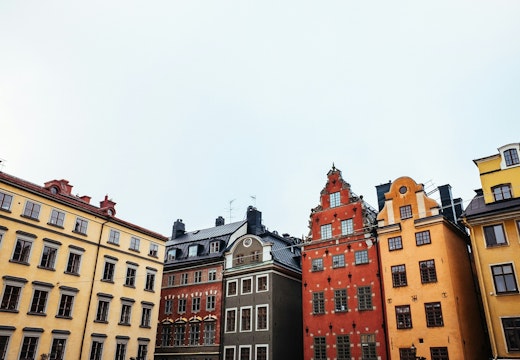The office as ecosystem: Berlin’s bold vision for the workplace
From liquid real estate to human-centred AI, the WORKTECH25 Berlin conference showcased dynamic responses to Germany’s rapid pace of change
Berlin is a city defined by its constant reinvention. Once divided by ideology and history, today it stands as a symbol of creativity, openness and transformation, emerging as a global hub for innovation and disruption.
The next disruptive wave to hit Berlin is the impact of artificial intelligence on work and the workplace, according to thought leaders presenting at the latest WORKTECH Berlin conference, held on 13 May 2025.
Across a day of inspiring talks, provocative research, and practical case studies, it became clear that Berlin is at a pivotal point of rapid change. Incremental adjustments to meet new demands are no longer enough. Instead, there is an appetite for industry leaders to act boldly and design workplaces that are adaptive, inclusive, intelligent, and truly human-centric.
The optimisation lie
A central theme throughout the event was a growing critique of the optimisation mindset that has dominated the workplace since Generative AI entered the mainstream workplace in late 2022. Markus Albers’ keynote presentation, based on his new book The Optimisation Lie, exposed how productivity-focused digital tools have failed to liberate knowledge workers.
Instead, they’re left more exhausted, fragmented and over-scheduled than ever before due to filling gaps in schedules with more meetings. Albers commented that ‘knowledge work is broken’ and suggests shifting the focus from relentless efficiency to creating workplaces that support deep, meaningful work and allow human creativity to flourish.
Author and workplace consultant Oscar Berg echoed this view in his session on navigating the future of work. He positioned AI not as a replacement for human workers, but as an enabler of ‘deep work’ so humans can conduct the focused, strategic tasks that generate true value.
AI: from hype to hybrid helper
Several speakers moved beyond AI hype to explore its practical applications in workplace design and planning. Uli Blum of Zaha Hadid Architects explored how AI can be applied in architectural space planning. His session revealed how machine learning can help generate hundreds of layout options in seconds, turning designers into curators rather than mere creators. AI, in this context, becomes a collaborator which supports ideation, communication with clients, and even behavioural observation.
Hojjat Attar of Offilancer built on this perspective by arguing for a hybrid approach to workplace analytics that blends sensor data with qualitative insights about team dynamics. His vision of ‘dynamic neighbourhoods’ and real-time space recommendations represents a significant leap toward workplaces that respond intelligently to how people actually work.
Implications of ‘Liquid Real Estate’
One of the key terms that captured the future-facing ethos of the event was ‘Liquid Real Estate.’ Introduced by Professor Dr Inaki Lozano Ehlers of BICG, the concept proposes a flexible, fluid model in which space is no longer static, but constantly shifts based on organisational needs. As businesses face growing volatility, from economic disruption to hybrid work, the idea of space as a reconfigurable service, rather than a fixed product, feels both necessary and urgent.
This sentiment was shared by lead architect and smart building consultant Michael Lohmann who challenged attendees to treat the office not as a static object, but as a learning ecosystem. Lohmann painted a picture of workplaces that evolve continuously, co-created by both users and designers. It’s a vision where physical environments are just as dynamic, responsive and upgradeable as digital products.
‘Physical environments can be just as dynamic, responsive and upgradeable as digital products…’
For corporate real estate leaders, this presents an opportunity to create portfolios that are lean, dynamic and agile. This idea was reinforced by a panel on right-sizing office portfolios, featuring experts from Deutsche Bahn, PUMA and Spaciv. They discussed the need for multi-dimensional workplace strategies that balance cost, carbon and culture.
‘Data is abundant, but turning it into confident decisions remains a challenge,’ said Sebastian Friedrich, head of corporate real estate for Puma. That challenge, however, is rapidly becoming a competitive differentiator.
Designing for people, not just productivity
Gensler’s 2025 Global Workplace Survey, presented by Philip Tidd and Sonja Jungnitsch, highlighted the disconnect between outdated office spaces and today’s hybrid work reality. Only 30% of offices, they reported, have been meaningfully redesigned since the pandemic. But the research also provided a roadmap for change. Employees want quiet zones, small meeting rooms, natural light, and spaces that feel emotionally resonant, not more boardrooms or hot desks.
High-performing workplaces are not defined by how many people show up, but by how well the space enables work. Emotion, alongside function, now plays a central role in workplace design. IKEA’s Linda Pamela Cordoba provided a compelling example of how workplace strategy can extend beyond organisational boundaries. Her session showcased an inclusive pilot programme that supported international employees through relocation, mentorship, and integration into the company culture.
Similarly, Ralf Dassau’s case study of Vattenfall’s offices in Munich and Berlin underscored the emotional dimension of workplace experience. ‘The office must become a destination,’ he urged. He emphasised that offices should energise, inspire, and respect the diversity of employee behaviours and preferences.
For senior workplace decision-makers the clear takeaway from WORKTECH Berlin 2025 was that the workplace is no longer just a location, it’s a living system of people, technology, and culture. To stay competitive, organisations must move beyond static space allocation, beyond short-term cost-cutting, and toward holistic strategies that blend data, empathy and agility.








